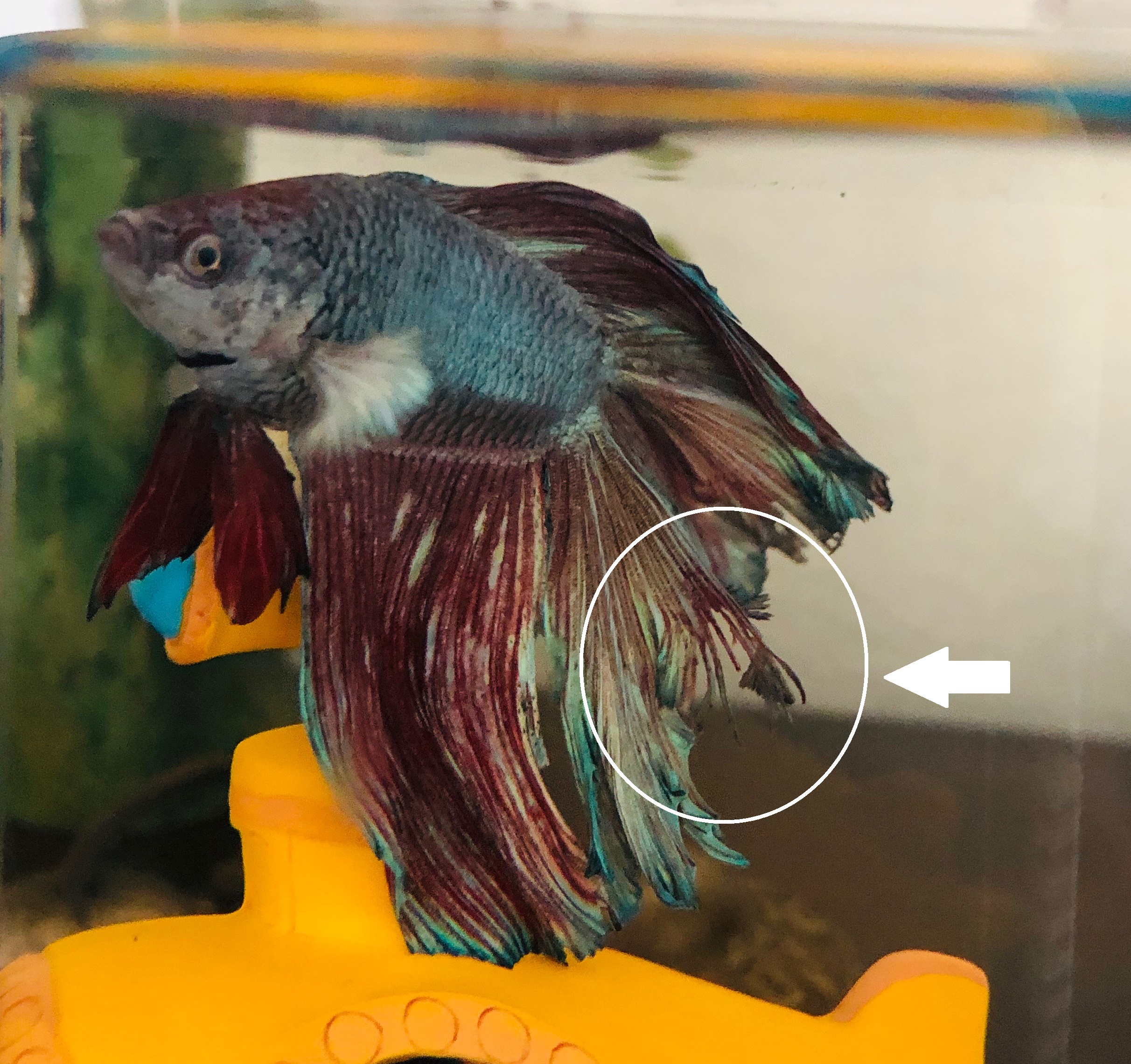Betta fish are hardy and resilient, but they are not immune to illnesses. Poor water quality, stress, or improper care can lead to a range of diseases that affect their health and well-being. Understanding common Betta fish diseases, their prevention, and effective treatments is essential to ensure your Betta thrives. In this guide, we’ll cover the most common diseases, how to prevent them, and what treatments work best to keep your Betta happy and healthy.
Common Betta Fish Diseases and Their Symptoms
1. Fin Rot

Symptoms: Frayed, discolored fins with edges that appear black or red. If untreated, it can progress to damage the body tissue.
Causes: Bacterial infections often caused by poor water quality or stress.
2. Ich (White Spot Disease)
Symptoms: Small white spots resembling grains of salt on the body and fins. Affected Bettas may rub against objects in the tank.
Causes: A parasitic infection triggered by poor water conditions or introducing infected fish.
3. Swim Bladder Disorder
Symptoms: Difficulty swimming, floating to the surface, or sinking to the bottom of the tank.
Causes: Overfeeding, constipation, or bacterial infections.
4. Velvet Disease
Symptoms: A gold or rust-colored dust-like coating on the Betta’s body. Fish may appear lethargic and rub against objects.
Causes: A parasitic infection caused by stress, poor water conditions, or overcrowding.
5. Popeye
Symptoms: One or both eyes appear swollen and bulge outward.
Causes: Bacterial infections, injuries, or poor water quality.
Best Prevention Strategies for Betta Fish Diseases
1. Maintain Optimal Water Quality
Keeping your Betta’s environment clean is the most effective way to prevent diseases.
- Perform regular water changes: Replace 25-30% of the water weekly to remove toxins.
- Monitor water parameters: Use a test kit to ensure ammonia and nitrite levels are at 0 ppm and nitrates stay below 20 ppm.
For more tips, visit Betta Fish Water Quality: How to Maintain a Clean and Healthy Environment.
2. Provide a Proper Diet
A balanced diet strengthens your Betta’s immune system and reduces the risk of illness.
- Feed a mix of high-quality Betta pellets and protein-rich treats like brine shrimp or bloodworms.
- Avoid overfeeding, as leftover food can pollute the water.
3. Quarantine New Fish and Plants
Introduce new tank additions carefully to avoid introducing diseases.
- Quarantine new fish for at least 2 weeks before adding them to the main tank.
- Rinse live plants thoroughly to remove pests or parasites.
4. Minimize Stress
Stress weakens your Betta’s immune system, making it more vulnerable to diseases.
- Provide plenty of hiding spots with plants and decorations.
- Avoid overcrowding the tank and ensure compatible tank mates.
Effective Treatments for Betta Fish Diseases
1. Fin Rot Treatment
- Antibacterial medications: Use products like API Fin and Body Cure or Seachem Kanaplex.
- Improve water quality: Perform frequent water changes and keep the tank clean.
2. Treating Ich
- Increase water temperature: Slowly raise the tank temperature to 82-86°F to speed up the parasite’s life cycle.
- Add medications: Use Ich-X or other Ich-specific treatments.
3. Swim Bladder Disorder Treatment
- Fasting: Stop feeding your Betta for 24-48 hours to allow its digestive system to reset.
- Cooked peas: Feed a small piece of a cooked, de-shelled pea to relieve constipation.
4. Velvet Disease Treatment
- Dim the lights: Velvet parasites thrive in light, so reduce tank lighting.
- Medications: Use copper-based treatments like Cupramine to eliminate the parasite.
5. Treating Popeye
- Epsom salt bath: Dissolve 1 teaspoon of Epsom salt per gallon in a separate container and place the Betta in it for 10-15 minutes.
- Antibiotics: Use medications like Maracyn 2 to treat bacterial infections.
When to Seek Professional Help
If your Betta’s condition doesn’t improve after treatment, consult a veterinarian experienced in aquatic animals. Early intervention is critical to preventing severe health issues or death.
Conclusion
Preventing and treating Betta fish diseases requires a combination of proper tank maintenance, a balanced diet, and careful observation. By understanding the causes and symptoms of common illnesses like fin rot, ich, and swim bladder disorder, you can take swift action to protect your Betta. A healthy environment and proactive care are key to keeping your Betta vibrant and thriving.
FAQs
1. How do I know if my Betta is sick?
Look for changes in behavior, such as lethargy, loss of appetite, or unusual swimming patterns, as well as physical symptoms like discoloration or fin damage.
2. Can stress cause Betta fish diseases?
Yes, stress weakens the immune system, making Bettas more susceptible to infections and illnesses.
3. How often should I clean my Betta’s tank?
Perform partial water changes weekly and clean the substrate and decorations as needed to maintain water quality.
4. Are diseases contagious between fish?
Some diseases, like ich and velvet, are highly contagious. Always quarantine new fish to prevent spreading infections.
5. Can I prevent diseases without medications?
Yes, maintaining clean water, providing a balanced diet, and minimizing stress are the best ways to prevent diseases naturally.
Pingback: The Ideal Diet for Betta for Better Health and Longevity - indooraqua
Pingback: The Best way to Keep Betta Fish Water Quality: Maintain a Clean and Healthy Environment - indooraqua
Pingback: #The Ultimate Betta Fish Tank Setup Checklist - indooraqua
Pingback: Betta Fish Tank Mistakes and How to Avoid Them - indooraqua
Pingback: Betta Bowl: Can Betta Fish Live in a Bowl? Debunking the Myth - indooraqua
Pingback: What Your Betta is Trying to Tell You: - indooraqua
Pingback: Creating a Natural Betta Habitat with Live Plants: A Complete Guide - indooraqua
Pingback: Beginners Guide to Set Up a Betta Fish Tank - indooraqua
Pingback: Best Tank Mates for Betta Fish: How to Choose the Right Companions - indooraqua